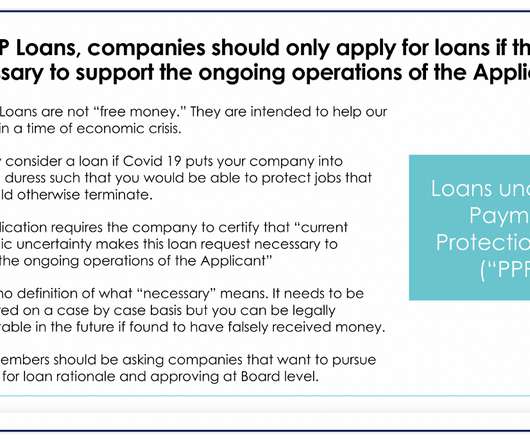13 Critical Small Business Legal Requirements to Start a Business
Up and Running
JULY 28, 2022
Starting a business involves brainstorming, planning, and ensuring that you comply with all necessary legal obligations. Not only do these requirements ensure that businesses operate within the law but it also protects small business owners and their consumers. . Decide on the proper business structure.


































Let's personalize your content